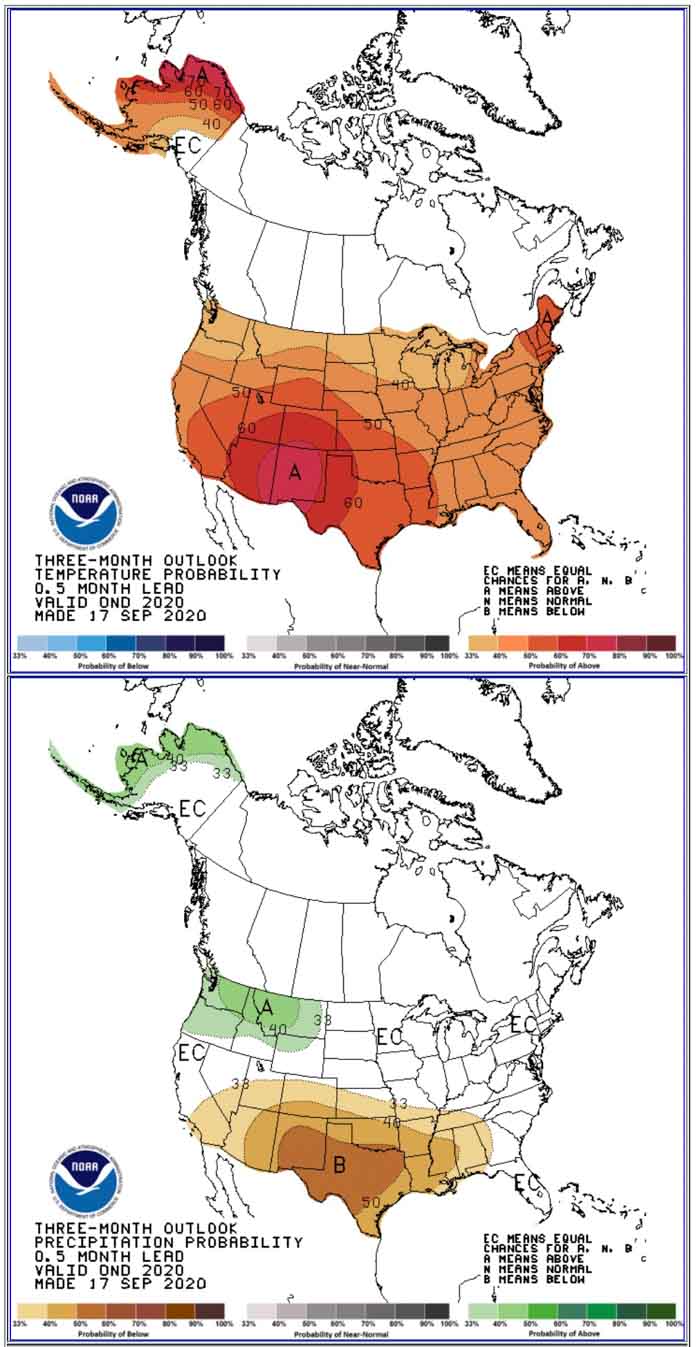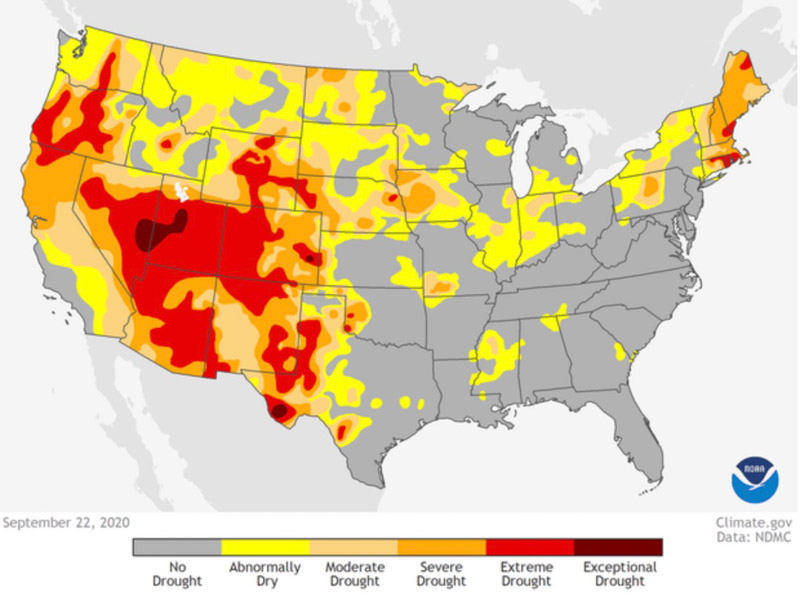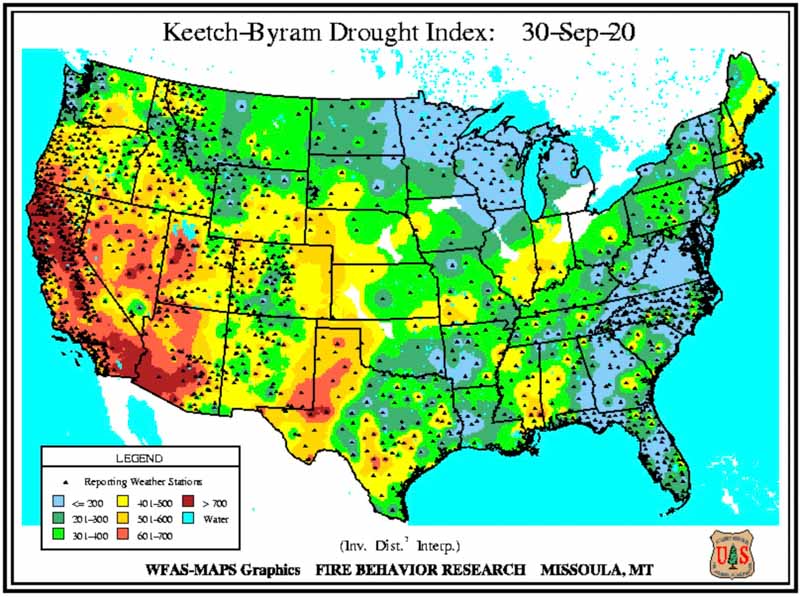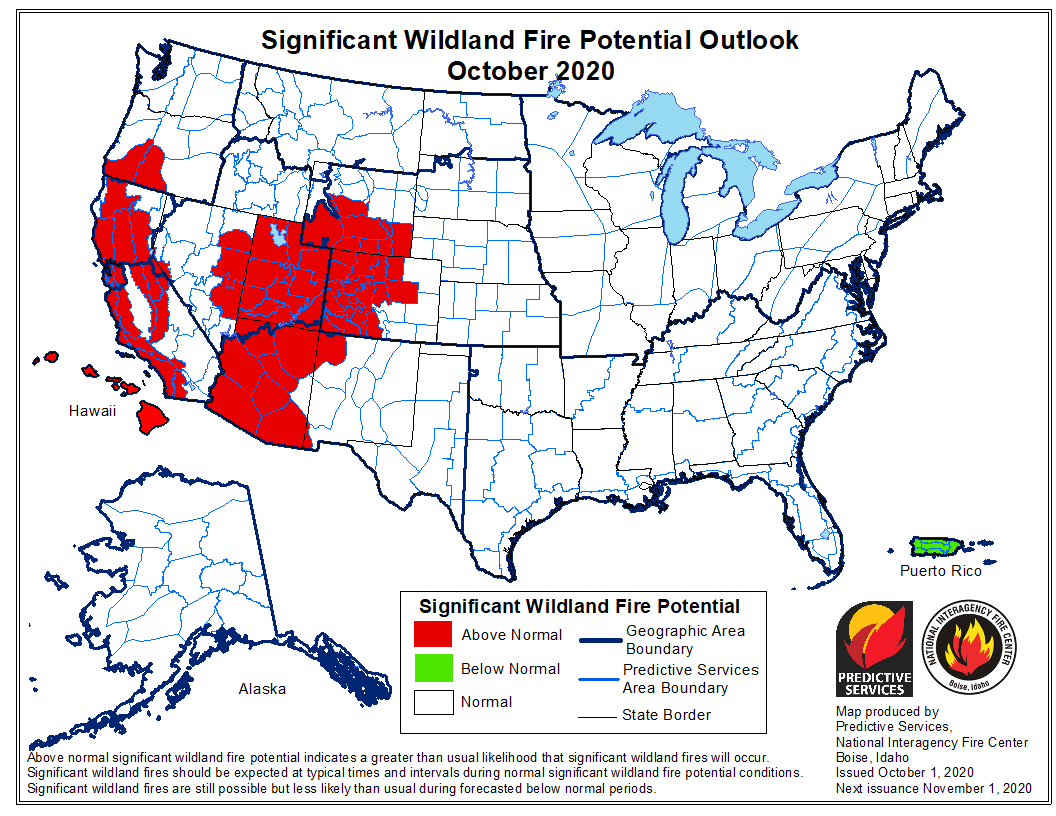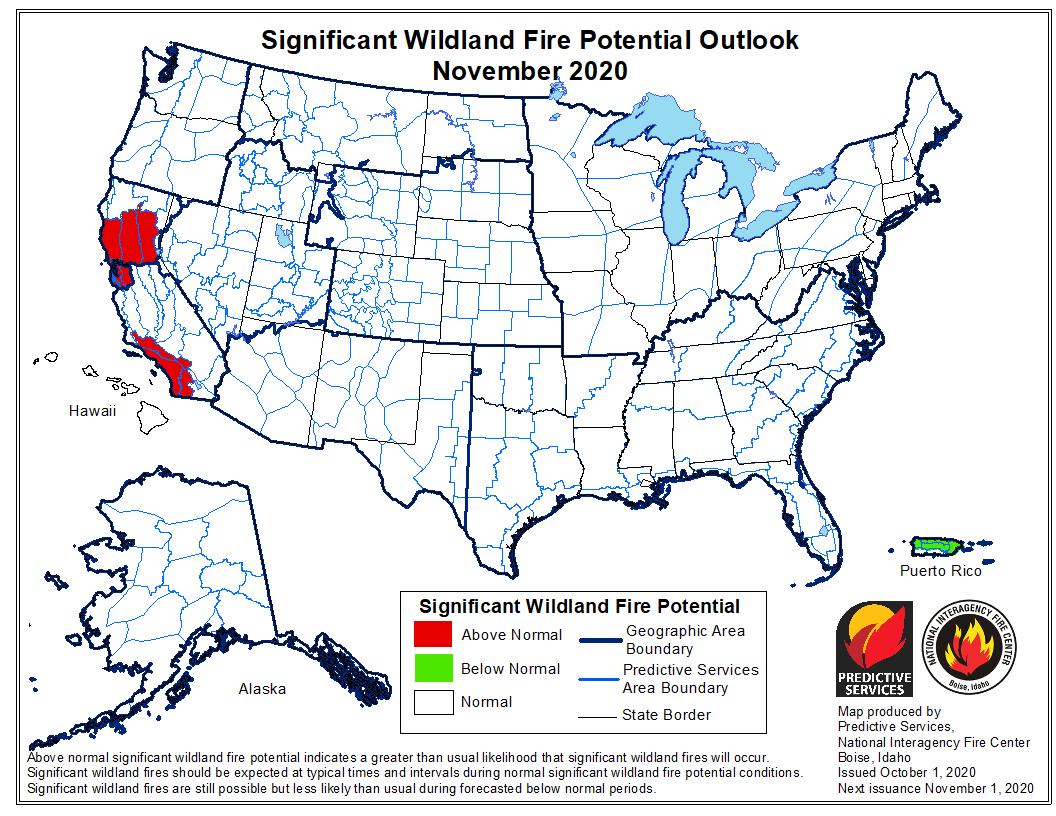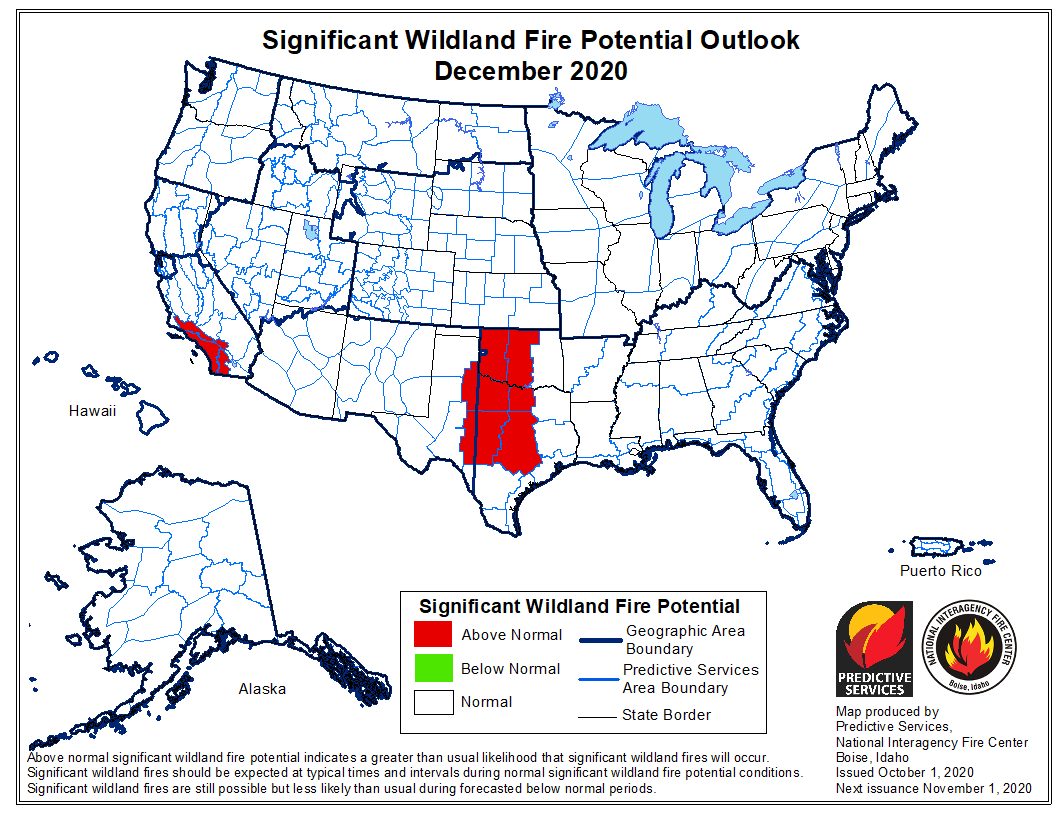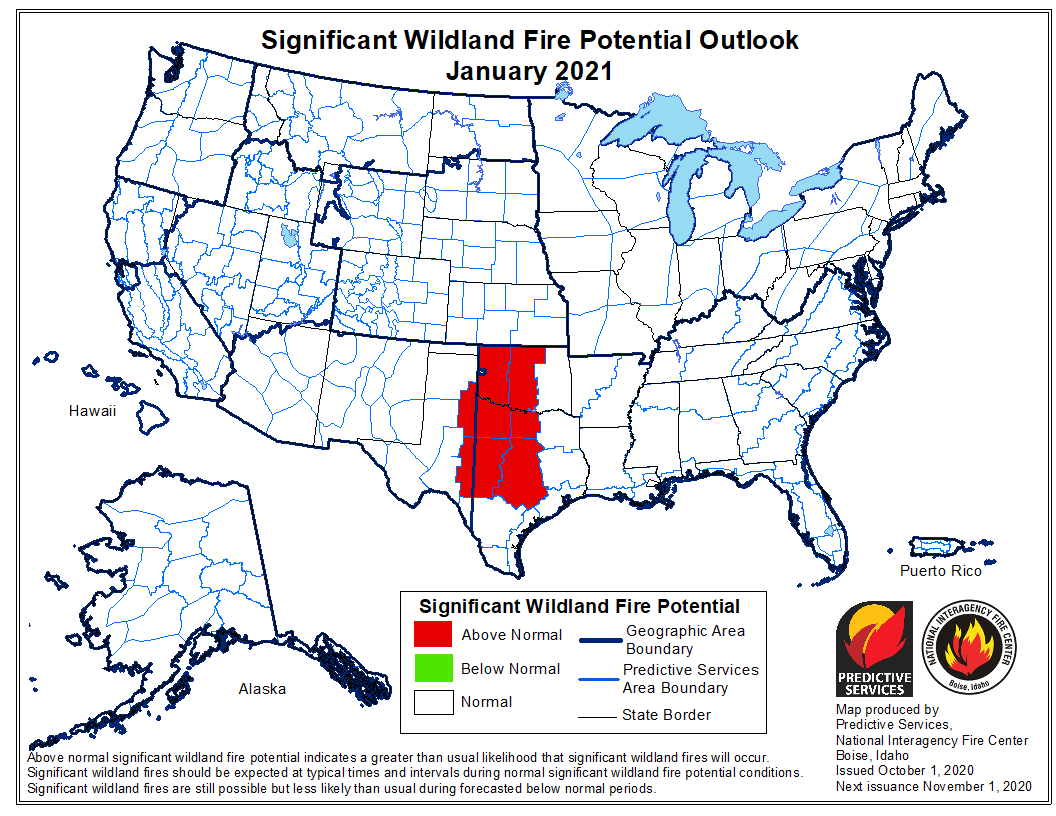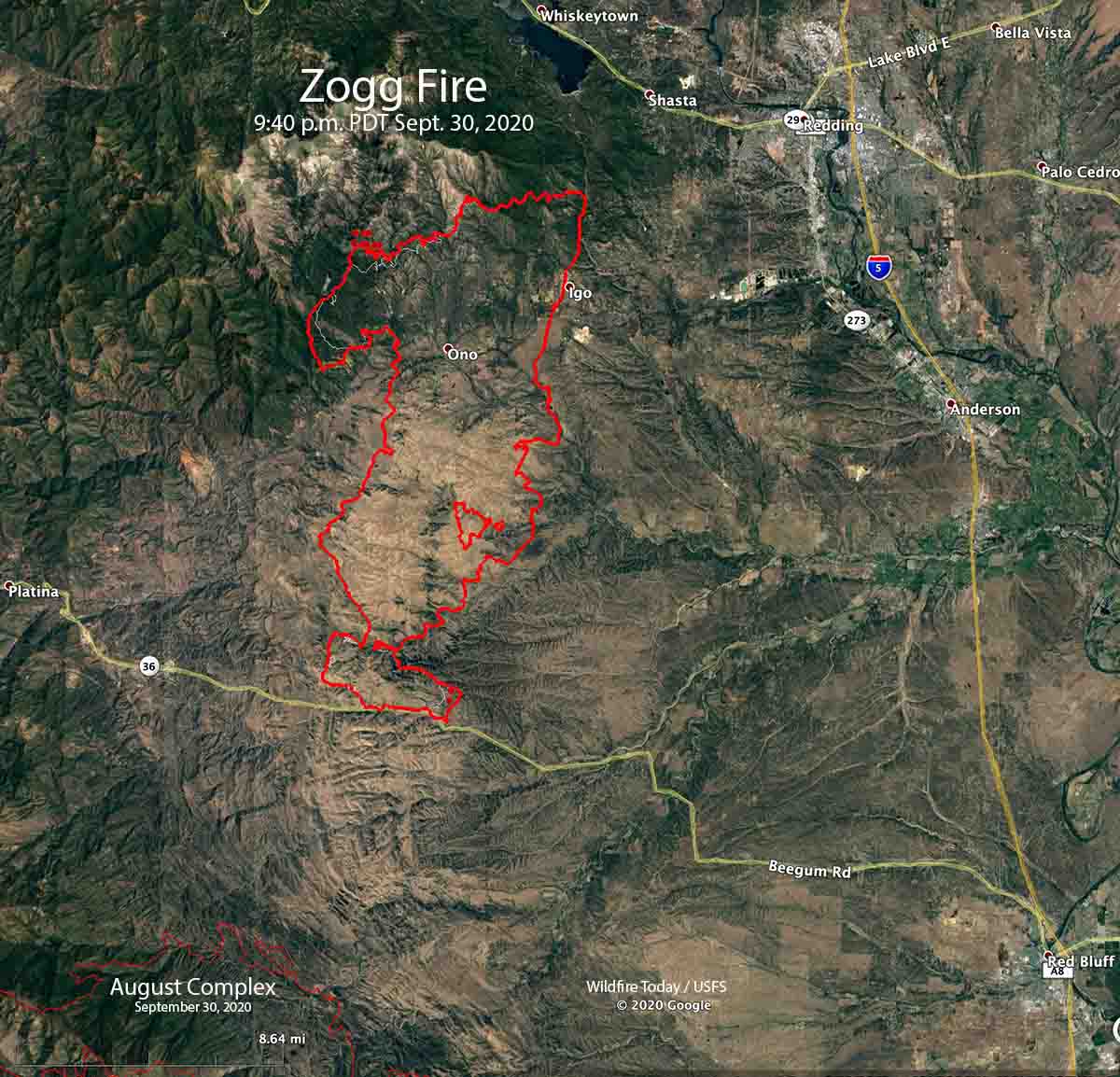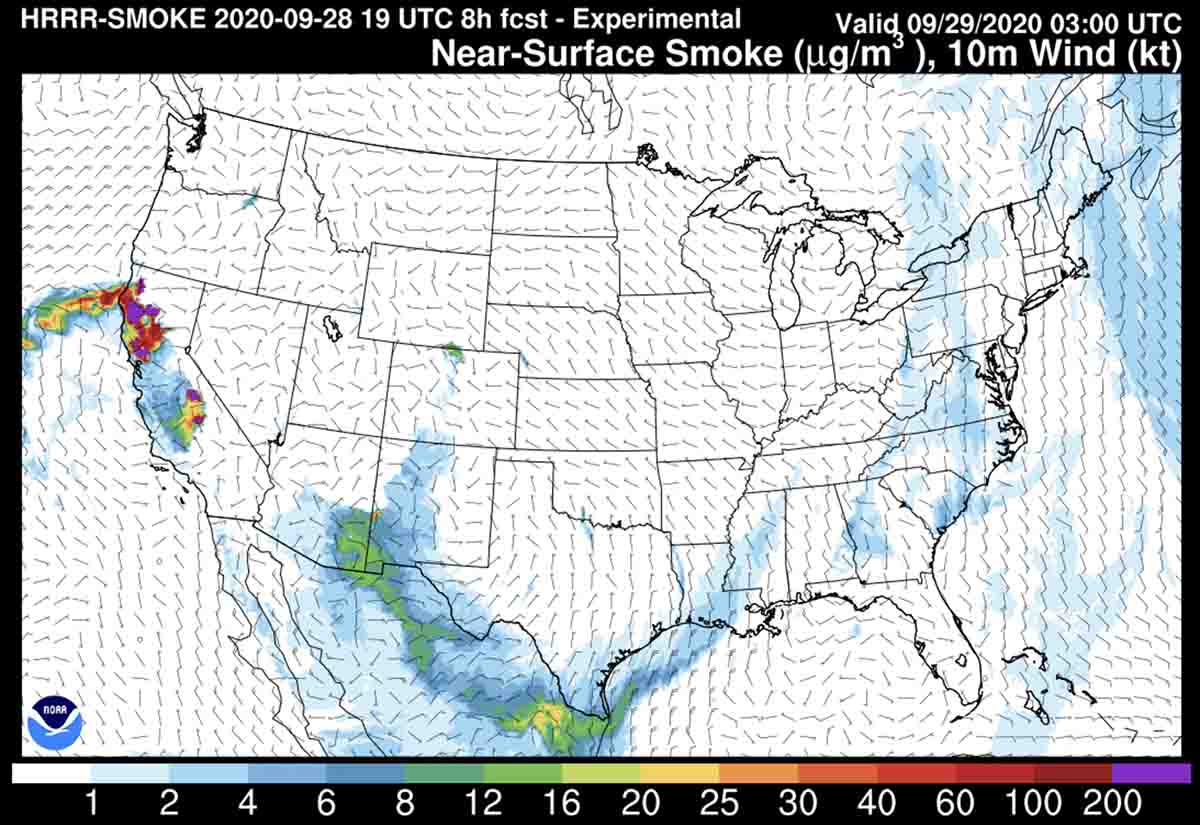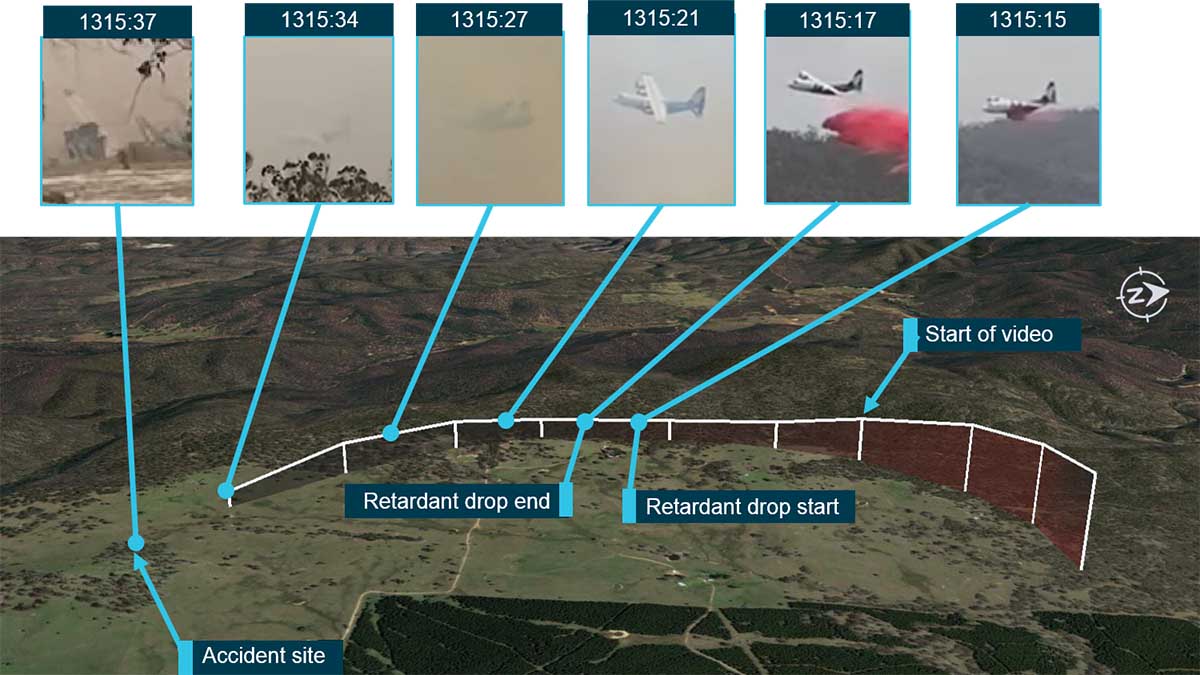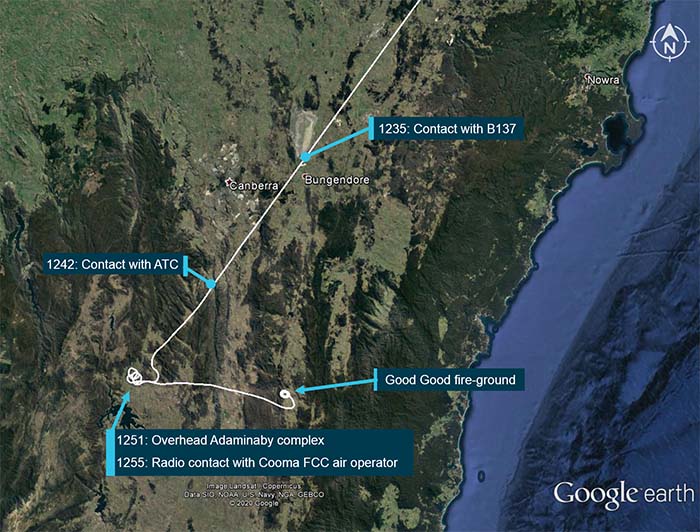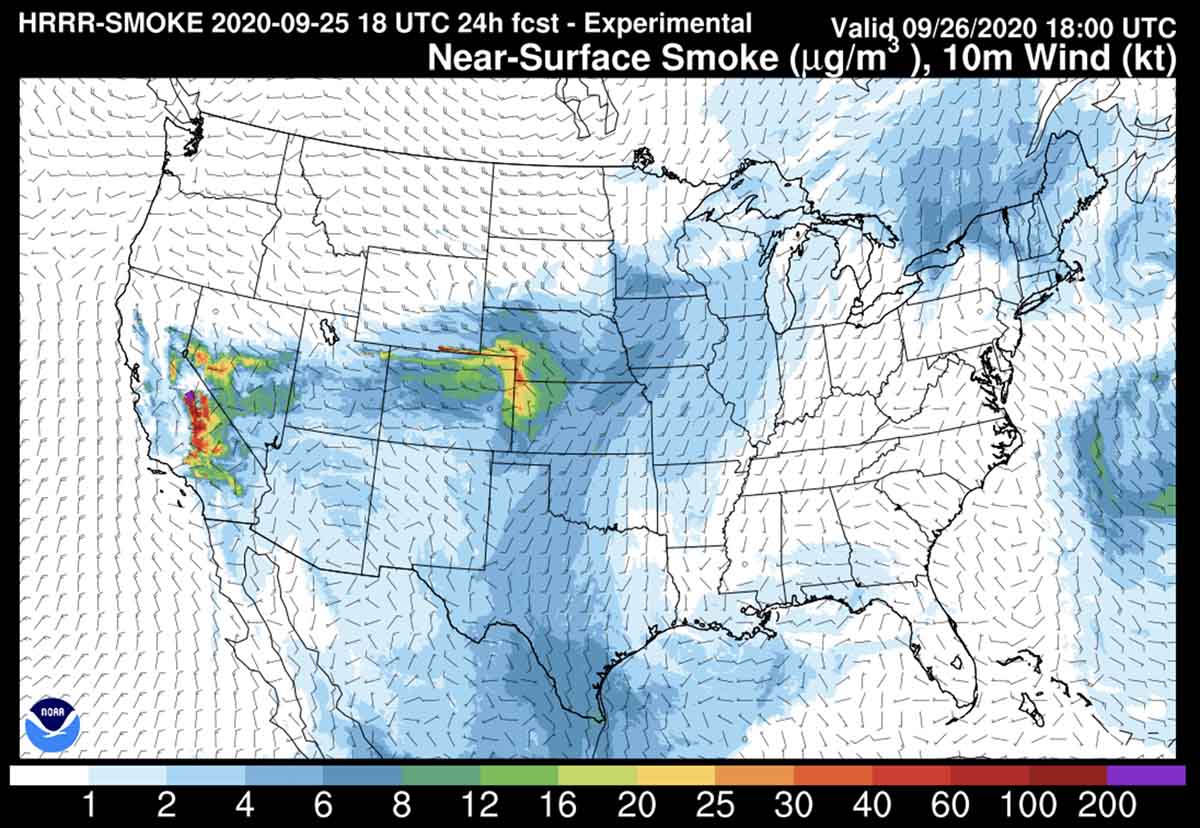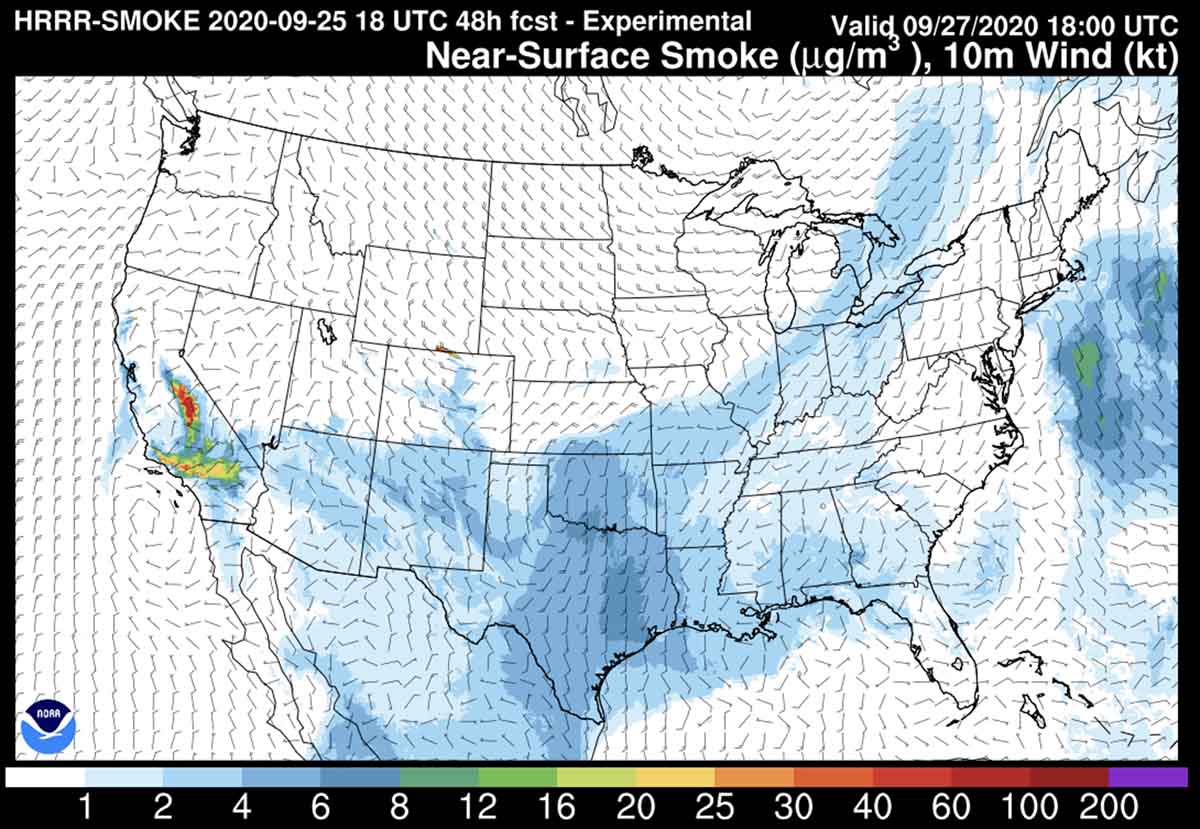The National Significant Wildland Fire Potential Outlook issued October 1 by the Predictive Services section at the National Interagency Fire Center predicts higher than average wildfire potential in October for portions of Oregon, Wyoming, Colorado, Arizona, Nevada, and most of California.
The data from NIFC shown here represents the cumulative forecasts of the ten Geographic Area Predictive Services Units and the National Predictive Services Unit.
Below:
- An excerpt from the NIFC narrative report for the next several months;
- More of NIFC’s monthly graphical outlooks;
- NOAA’s three-month temperature and precipitation forecasts;
- Drought Monitor;
- Keetch-Byram Drought Index.
“La Niña and current fuel conditions are the main drivers of significant fire potential through fall and into winter. Drought conditions are expected to continue for much of California, the Great Basin, and the Southwest through October with drying expected to increase across portions of the southern Plains and Southeast. Significant fire potential remains above normal for California due to the number of active large fires, near record dry fuels, and offshore wind events.
“Above normal significant fire potential is expected across much of California, Arizona, eastern Nevada, Utah, Colorado Rockies, and southern Wyoming in October. However, fire activity and potential will likely diminish across the West, except for portions of California, and remain normal over the Eastern and Southern Areas through November. Elevated periods of fire activity are likely in portions of Oklahoma and Texas and possibly in other locations in the Southern Area during fall into winter.”
